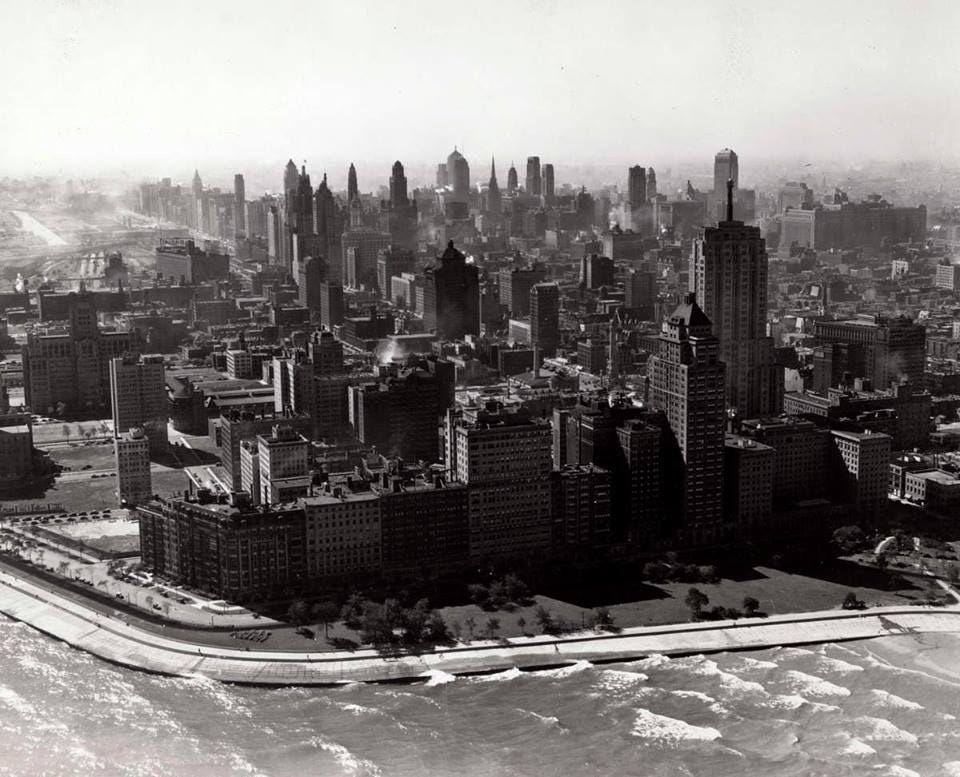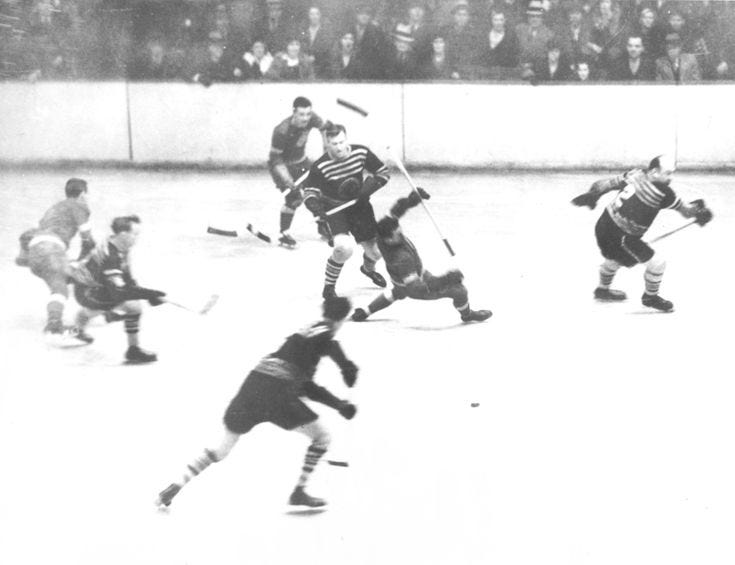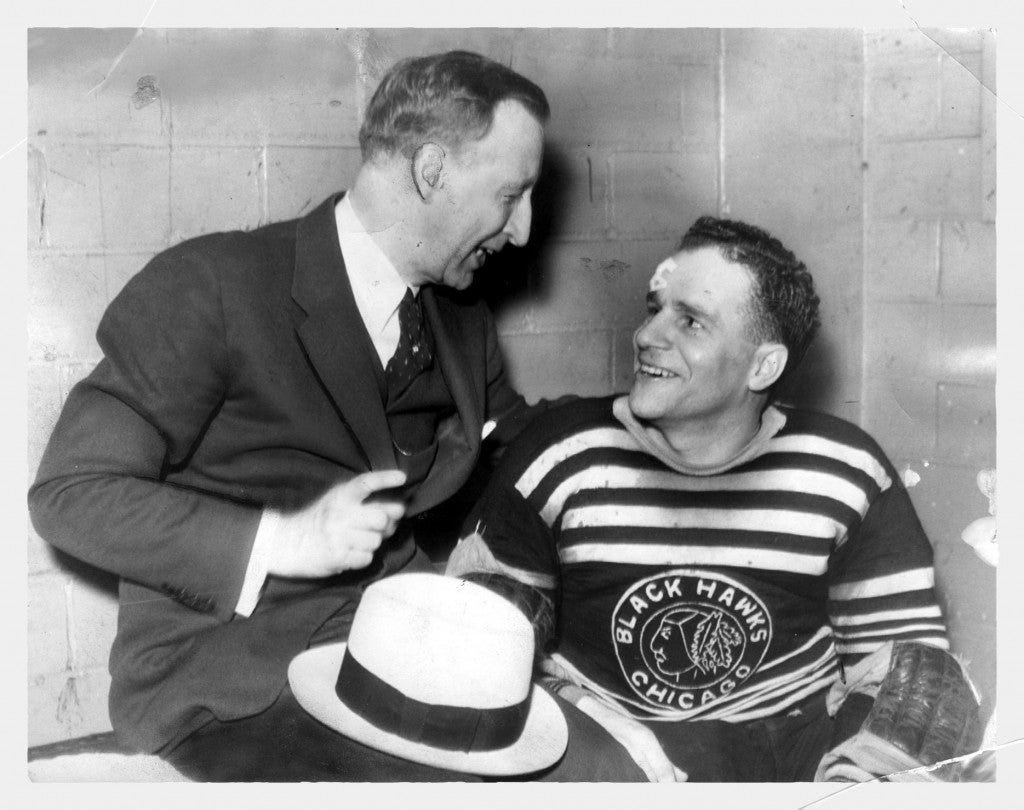Hawks Weekly Update 6/25
Charlie Gardiner and the 1934 Black Hawks
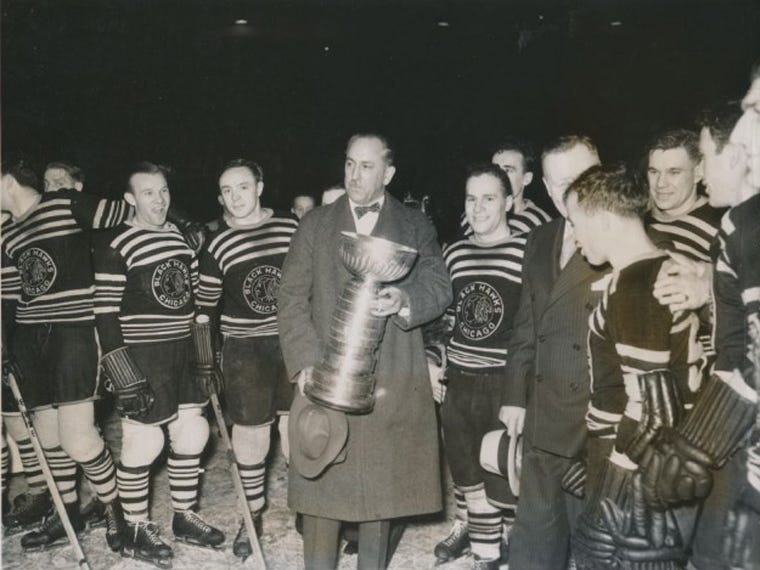
Surprise.
The draft is at the end of the week. Came by pretty quickly.
A few news items to discuss. With the Stanley Cup Final finished, I decided to focus this week’s Hawks History on one of the most impressive Stanley Cup wins of all time. I could have gone with the 2013 “17 seconds,” but that’s low-hanging fruit. If you search a bit higher in the history-tree you’ll find a lesser-known story that deserves more recognition, even if it’s 90 years later.
In the meantime, congrats to the Florida Panthers. That was a great series, even if I really wanted the Oilers to win.
Hawks Weekly Update
The NHL Entry Draft is at the end of the week. It’s the only real Hawks-related news item that will be worth discussing.
The Hawks pre-season schedule was unofficially released. It’ll be fun to watch roster battles and how the prospects look. We’ll also have to prepare ourselves for the inevitable “Bedard doesn’t look like himself” comments by people who put too much thought into pre-season.
Powers released an interesting article on prospects that the Hawks could pick at 18. I don’t think anyone from my Draft Preview was on there.
Cole Guttman signed a 1-year deal worth $775k. This is lower than his previous deal, which was an ELC at $950k. Guttman’s defensive woes helped him secure a spot on the IceHogs roster last season, where he had a decent season before he was injured.
Second City Hockey has been putting out some solid player profiles. You need to be a subscriber but it’s worth the price, in my opinion.
Ben Pope put a good offseason preview that’s worth your time.
Hawks History - The 1934 Stanley Cup and Charlie Gardiner
Spring 1934.
It’s the Great Depression and you live in a shack in Chicago. Your belly is warm from today’s meal, a boiled shoelace.
As you walk down towards the Loop, you rub your filthy eyes with dust-encrusted hands. They leave brown spots on your eye.
Grown men run down the sidewalk with a rickety-wheelbarrow laden with a laughing man. People line street and cheer the spectacle.
You clap your hands, leaving clouds of dust hanging in the air. You recognize the men bouncing along the bumpy sidewalk. You croak out a cheer. It’s the Chicago Black Hawks, recent champions of the Stanley Cup. That man in the wheelbarrow is none other than Charlie Gardiner, net-minder of said champions.
For one moment you forget about the hard times and you revel in the joy of a city coming together to cheer on local heroes.
Here Come the Hawks
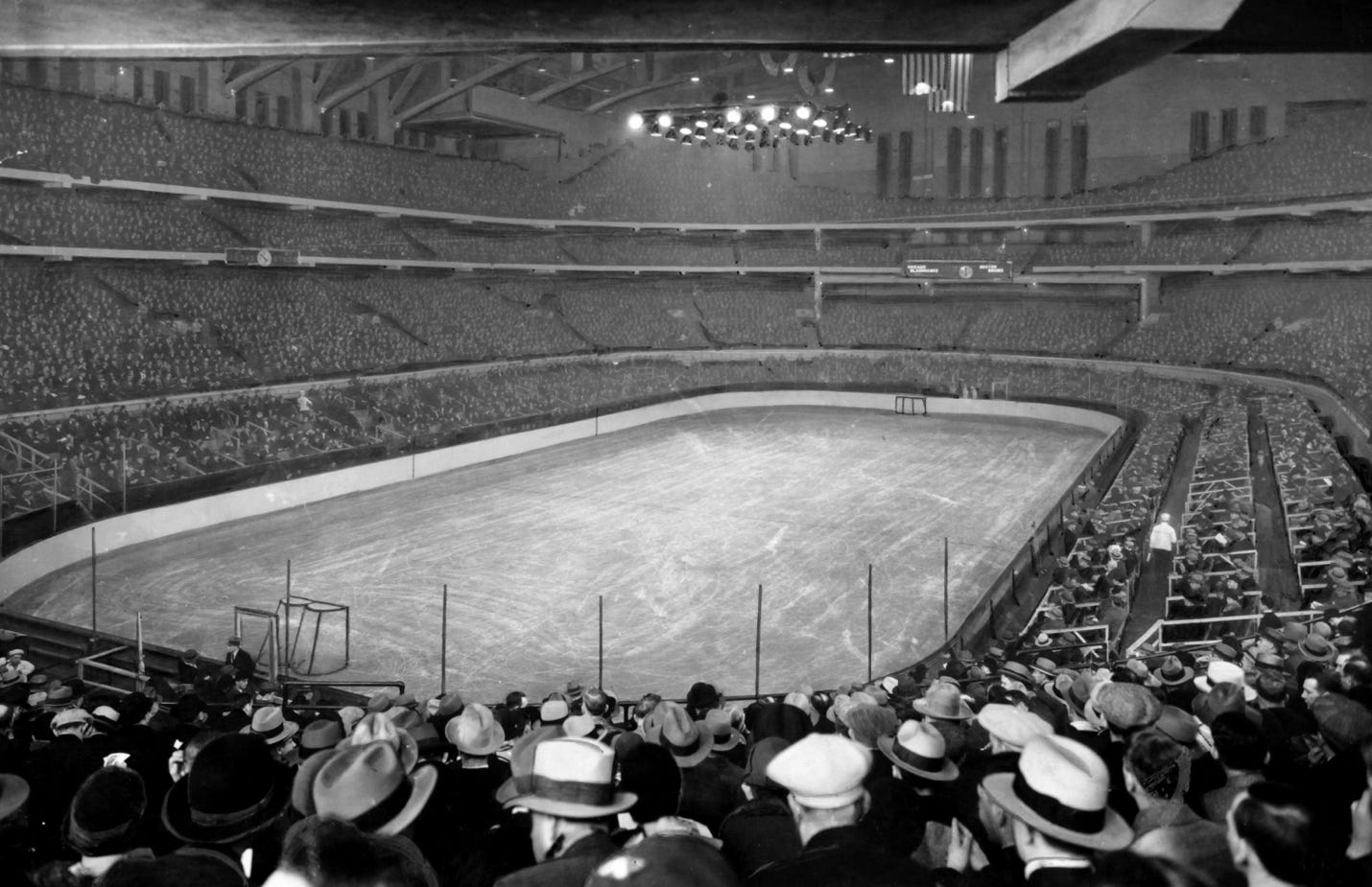
April 10, 1934. Chicago Stadium.
Game 4 is nearly underway as 18,000 fans of the Black Hawks fill the stadium. The Black Hawks are up 3-1 in the best of 5 series. The Detroit Red Wings are in their first Stanley Cup Final appearance. For Chicago, it’s their second.
The 1933 season was good for both teams. Detroit finished on top of the American Division with 58 points. The Red Wings also acquired Cooney Weiland from the Ottawa Senators, a high scoring forward.
The Black Hawks were right below the Wings with 51 points. The Hawks rebounded from a last place finish the season prior. Owner and GM Frederic McLaughlin continued his musical chair game of coaches by rehiring Tommy Gorman as head coach.
Even though the Black Hawks had Gorman back behind the bench and scorers like Paul Thompson and Johnny Gottselig, they still finished at the bottom of scoring in the NHL with only 88 goals.
The Hawks real success that season came from netminder and Captain Charlie Gardiner.
Gardiner had 1 Vezina Trophy under his belt already and he only allowed 83 goals in the 1933 season. No other team fared better in net. He set a team record of 1.63 GAA while winning 20 games, 10 of which were shutouts.
It should come as no surprise then that on April 10, as Charlie skated towards his end of the ice, the Chicago crowd cheered in excitement for their Captain.
Even though there was no goalie mask to hide a stoic face, Gardiner still hid the fact that beneath his ice-cold demeanor, he was fighting for his life.
Chuck
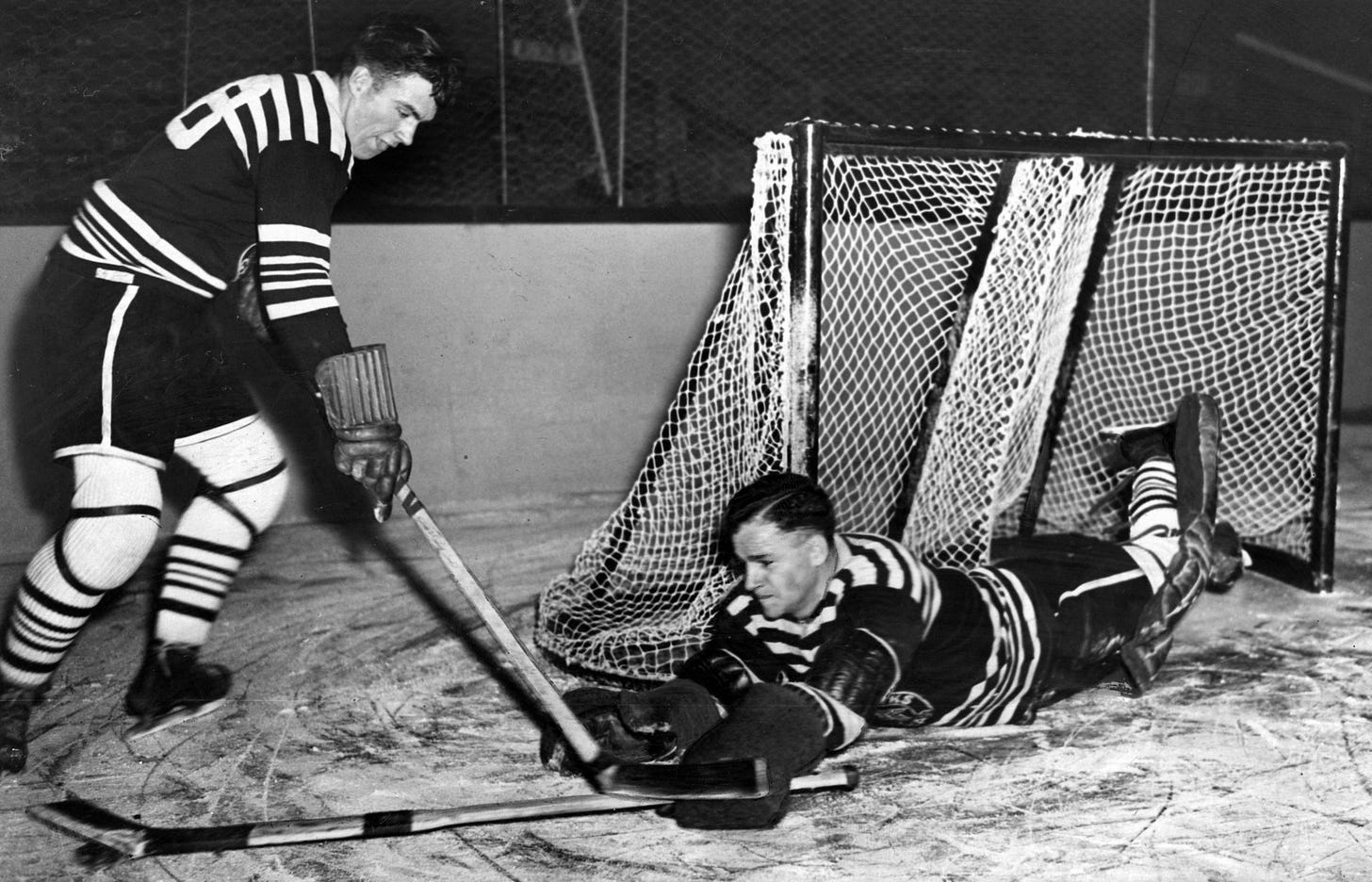
Charlie was known as Chuck to those who were close.
Born in Scotland, Chuck and his family would move to Manitoba in 1911 when he was 7 years old. At 8, he began playing hockey and played as a goal-tender because he couldn’t skate very well. At 13 he would start playing competitively with the Victorias, eventually he would be good enough to play junior hockey when he was 17.
Gardiner would join a new NHL team in 1927, the Chicago Black Hawks who had just joined the league a year prior. And they were bad.
Gardiner minded the net while the Hawks only scored 33 goals. And Chuck took the brunt of criticism, the fans booed him and he almost retired. McLaughlin even came close to selling him in a desperate effort to get the team to win.
In 1929, things would change. The Black Hawks started to win and they even went to the Stanley Cup Final in 1931. Even though they lost to the Montreal Canadiens, the Black Hawks were determined to try again.
Gardiner would win the Vezina in 1932 after recording 4 shutouts and a 1.85 GAA for the 1931-1932 season.
The Black Hawks still had goal-scoring problems to start the 1932 season and there was a hidden problem with their goal tender as well. Gardiner had developed a serious tonsil infection and kept it quiet until December 1932.
Playing against the Toronto Maple Leafs on December 22, Gardiner collapsed in between periods. Chuck had a fever of over 100 degrees.
He went back out on the ice and won the game with 55 saves. Gardiner was rushed to the hospital after the game.
Despite the losing season, the players saw a leader in Chuck. He was named the team captain for the next season by a unanimous vote by the players.
Throughout the 1933 season, Chuck’s symptoms worsened. Intense pain clutched his throat and pierced his kidneys. But on the outside, he said he was fine. He needed to be there for the team.
In January, Gardiner started to have problems with his vision. Black spots would appear.
The Black Hawks made the post-season with Chuck playing his best hockey. The Hawks avenged their 1931 loss as they bested the Canadiens in the first round.
The second round placed them against the Montral Maroons. The first game was on March 28 and Gardiner’s pain worsened. He suited up with a fever of 102 degrees. The Black Hawks won 3-0.
The Hawks would advance to the Stanley Cup Final where the first place Red Wings awaited them.
April 10
As the puck dropped, the Chicago Stadium reverberated with the early roars of a notoriously loud crowd.
The Red Wings turned the match into a goalie standoff. Fighting off insults from a Chicago crowd that anticipated a Stanley Cup win, Wilf Cude stopped everything the Black Hawks shot at him.
But so did Chuck.
In between stoppages, Chuck would slump over on the crossbars fighting against blacking out.
Period 3 came to an end with a score of 0-0. Overtime started and would end with no winner.
The players on both sides were exhausted. The crowd, hyped up on booze and tobacco, roared for more.
The second overtime period started.
As the game went on to 90 minutes, Doc Romnes skated down the ice with Harold “Mush” Marsh. Mush received a pass from Doc and shot it at Cude.
It went in.
The Black Hawks won their first Stanley Cup.
State Street
There you stand clapping your dusty hands as Chuck is wheel barrowed by his teammates.
You cheer on the champions of your city. Especially that goal tender, who you knew was fighting an illness.
You wonder why he is being wheel barrowed, but you don’t know that it was a bet made by Black Roger Jenkins. If the Hawks won a Stanley Cup, he promised to wheel barrow Chuck on State Street.
Roger and Lionel Conacher laugh with their Captain who gave his all to engrave their names on the cup and his second Vezina Trophy.
A few days later, on June 10. Charlie Gardiner would collapse and slip into a coma.
On June 13, 1934, Charlie Gardiner would pass away from a brain hemorrhage at the age of 29.
Sources:
Hockey Chicago Style, Paul Greenland
Chicago Blackhawks: A Decade-by-Decade History, Joe Knowels




